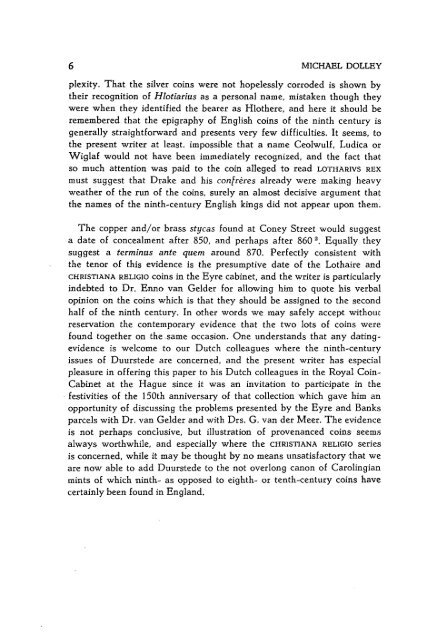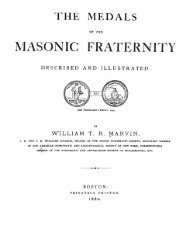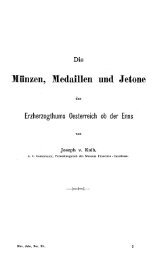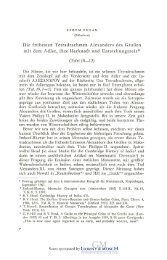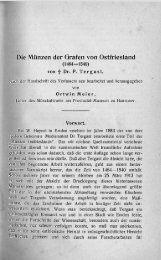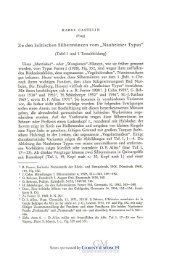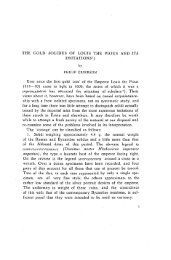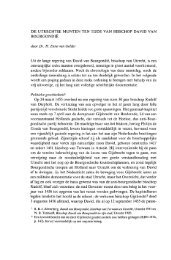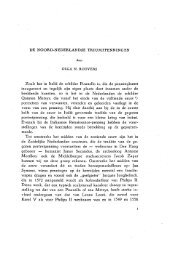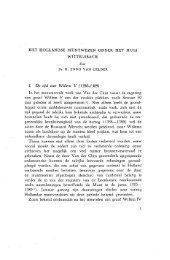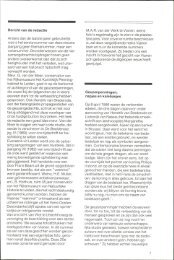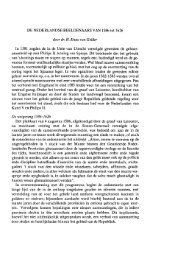New light on the pre-1760 Coney Street (York) find of coins of the ...
New light on the pre-1760 Coney Street (York) find of coins of the ...
New light on the pre-1760 Coney Street (York) find of coins of the ...
Create successful ePaper yourself
Turn your PDF publications into a flip-book with our unique Google optimized e-Paper software.
6 MICHAEL DOLLEY<br />
plexity. That <strong>the</strong> silver <strong>coins</strong> were not hopelessly corroded is shown by<br />
<strong>the</strong>ir recogniti<strong>on</strong> <strong>of</strong> Hlotiarius as a pers<strong>on</strong>al name, mistaken though <strong>the</strong>y<br />
were when <strong>the</strong>y identified <strong>the</strong> bearer as Hlo<strong>the</strong>re, and here it should be<br />
remembered that <strong>the</strong> epigraphy <strong>of</strong> English <strong>coins</strong> <strong>of</strong> <strong>the</strong> ninth century is<br />
generally straightforward and <strong>pre</strong>sents very few difficulties. It seems, to<br />
<strong>the</strong> <strong>pre</strong>sent writer at least, impossible that a name Ceolwulf, Ludica or<br />
Wiglaf would not have been immediately recognized, and <strong>the</strong> fact that<br />
so much attenti<strong>on</strong> was paid to <strong>the</strong> coin alleged to read LOTHARIVS REX<br />
must suggest that Drake and his c<strong>on</strong>frères already were making heavy<br />
wea<strong>the</strong>r <strong>of</strong> <strong>the</strong> run <strong>of</strong> <strong>the</strong> <strong>coins</strong>, surely an almost decisive argument that<br />
<strong>the</strong> names <strong>of</strong> <strong>the</strong> ninth-century English kings did not appear up<strong>on</strong> <strong>the</strong>m.<br />
The copper and/or brass stycas found at C<strong>on</strong>ey <strong>Street</strong> would suggest<br />
a date <strong>of</strong> c<strong>on</strong>cealment after 850, and perhaps after 860 2 . Equally <strong>the</strong>y<br />
suggest a terminus ante quem around 870. Perfectly c<strong>on</strong>sistent with<br />
<strong>the</strong> tenor <strong>of</strong> this evidence is <strong>the</strong> <strong>pre</strong>sumptive date <strong>of</strong> <strong>the</strong> Lothaire and<br />
CHRISTIANA RELIGIO <strong>coins</strong> in <strong>the</strong> Eyre cabinet, and <strong>the</strong> writer is particularly<br />
indebted to Dr. Enno van Gelder for allowing him to quote his verbal<br />
opini<strong>on</strong> <strong>on</strong> <strong>the</strong> <strong>coins</strong> which is that <strong>the</strong>y should be assigned to <strong>the</strong> sec<strong>on</strong>d<br />
half <strong>of</strong> <strong>the</strong> ninth century. In o<strong>the</strong>r words we may safely accept without<br />
reservati<strong>on</strong> <strong>the</strong> c<strong>on</strong>temporary evidence that <strong>the</strong> two lots <strong>of</strong> <strong>coins</strong> were<br />
found toge<strong>the</strong>r <strong>on</strong> <strong>the</strong> same occasi<strong>on</strong>. One understands that any datingevidence<br />
is welcome to our Dutch colleagues where <strong>the</strong> ninth-century<br />
issues <strong>of</strong> Duurstede are c<strong>on</strong>cerned, and <strong>the</strong> <strong>pre</strong>sent writer has especial<br />
pleasure in <strong>of</strong>fering this paper to his Dutch colleagues in <strong>the</strong> Royal Coin-<br />
Cabinet at <strong>the</strong> Hague since it was an invitati<strong>on</strong> to participate in <strong>the</strong><br />
festivities <strong>of</strong> <strong>the</strong> 150th anniversary <strong>of</strong> that collecti<strong>on</strong> which gave him an<br />
opportunity <strong>of</strong> discussing <strong>the</strong> problems <strong>pre</strong>sented by <strong>the</strong> Eyre and Banks<br />
parcels with Dr. van Gelder and with Drs. G. van der Meer. The evidence<br />
is not perhaps c<strong>on</strong>clusive but illustrati<strong>on</strong> <strong>of</strong> provenanced <strong>coins</strong> seems<br />
always worthwhile and especially where <strong>the</strong> series<br />
is c<strong>on</strong>cerned while it may be thought by no means unsatisfactory that we<br />
are now able to add Duurstede to <strong>the</strong> not overl<strong>on</strong>g can<strong>on</strong> <strong>of</strong> Carolingian<br />
mints <strong>of</strong> which ninth- as ooDOsed to eighth- or tenth-century <strong>coins</strong> have<br />
certainly been found in England


